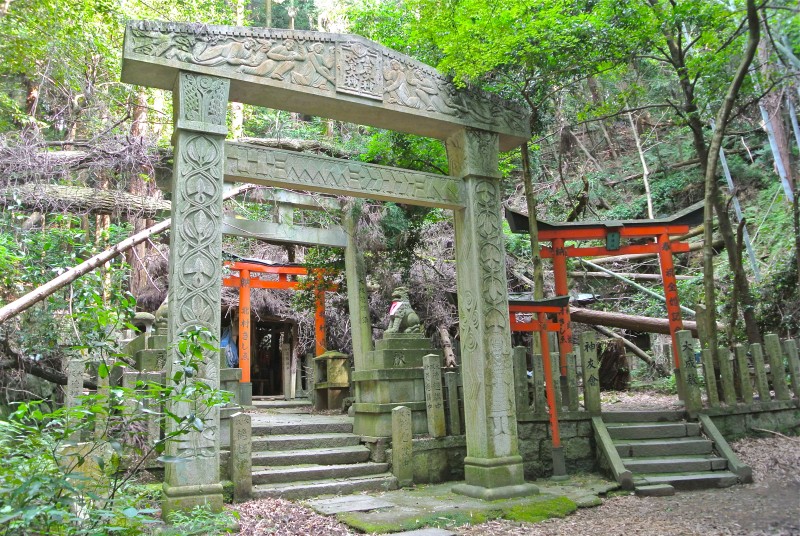 It’s not often you get to play Indiana Jones, but that’s how it felt on a recent excursion to the overgrown Oiwa Jinja for there is something of the feel of Angkor Wat about the abandoned shrine. Oddly, after more than twenty years in the city I’d never come across this exotic gem before. Or even heard of it.
It’s not often you get to play Indiana Jones, but that’s how it felt on a recent excursion to the overgrown Oiwa Jinja for there is something of the feel of Angkor Wat about the abandoned shrine. Oddly, after more than twenty years in the city I’d never come across this exotic gem before. Or even heard of it.
It was Ken Rogers of Kyoto Journal who first drew my attention to the shrine, when he sent me photos of a highly decorated torii he had come across. It was the work of Kyoto artist Doumoto Insho, he said, and stood on the south eastern stretch of the city, on the trail between Fushimi Inari and Momoyama Castle.
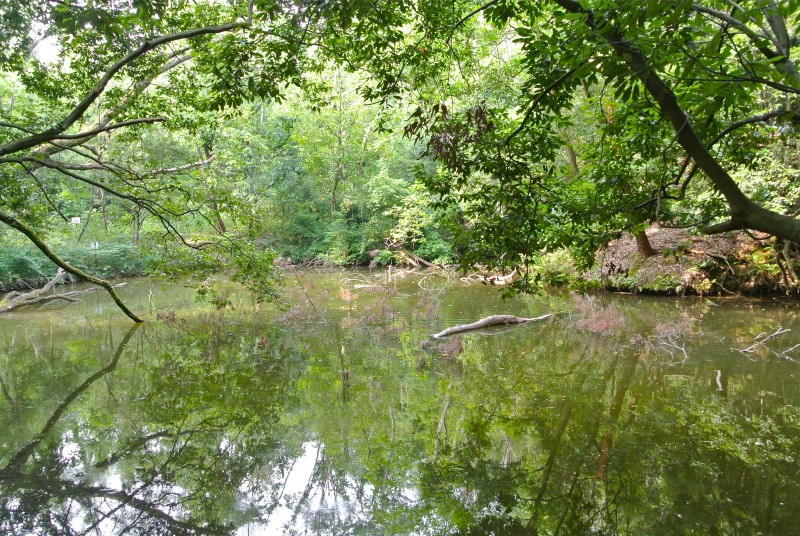
Surprisingly there is next to no information about the shrine on the internet, even in Japanese. The location on Oiwa Hill was easy to track down, though, and after locating a torii at the base of the hill my partner and I set off on foot to investigate. The path took us away from civilisation and through a thick bamboo forest, the lushest I’ve seen in Kyoto, then into mixed and overgrown woods.
As we approached Dragon Pond (Shirahime Ryujin Okami), the ground grew increasingly soggy and there were ominous signs saying ‘Beware of mamushi’ (poisonous snake). Then after winding uphill, the path took us round a bend to reveal a striking scene. There before us was a Greek-style torii, totally unexpected in this very Japanese setting. Behind it stood dilapidated wooden buildings, their roofs caved in by fallen trees.
The stone lanterns, rock shrines and guardian statues spoke of a once flourishing shrine. Now, however, the forces of nature had started the laborious task of reclaiming them. Neglect and decay were still in their early stages, but clearly the precincts had not received the attention they badly needed.
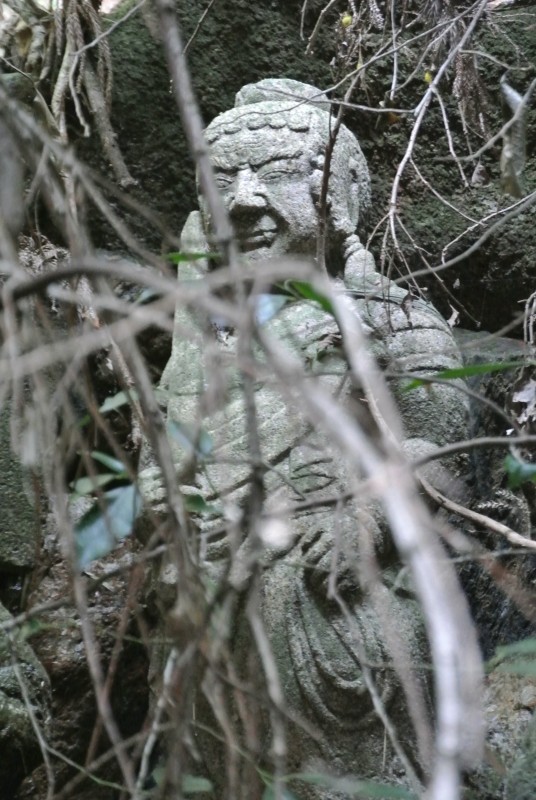
Looking around, I could see the typical features of Inari shinko (the Inari faith). There were stone altars called otsuka, which bore individualised names of the kami. There were red torii and guardian foxes too, just as at nearby Fushimi Inari.
In the middle of the buildings was a place for misogi (cold water austerities). The overgrown entrance suggested it was more frequented by snakes than ascetics in recent years. Presiding over it all was the ever vigilant Fudo Myoo, solitary sentinel of the now unused facility.
How and when had this marvellous shrine been abandoned, I wondered? How could somewhere so prestigious as to boast a torii from famed artist Domoto Inshou be now so neglected? As we wound our way further up the hill, we discussed the possibilities. What we hadn’t realised, however, was that the main part of the shrine lay up ahead, unseen through the thick woods. What we discovered there only served to deepen the mystery.
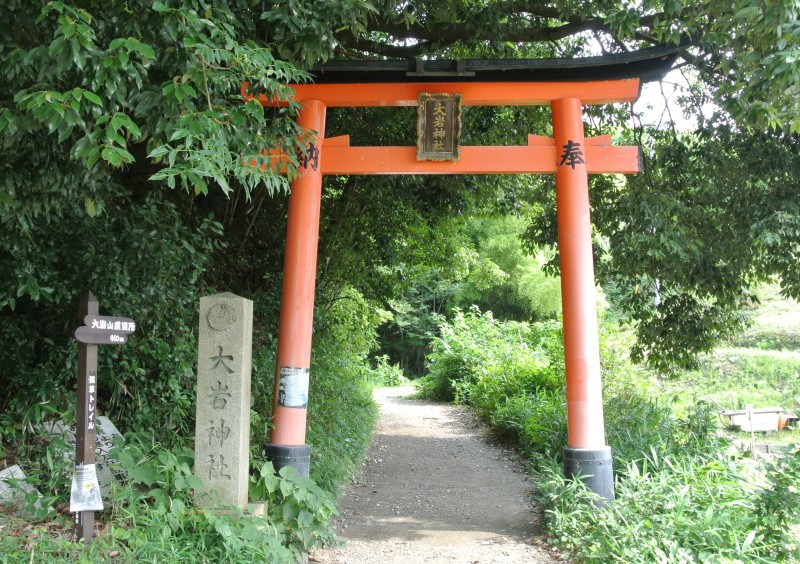
The entrance torii looks typically inviting – a gateway into the realm of kami.
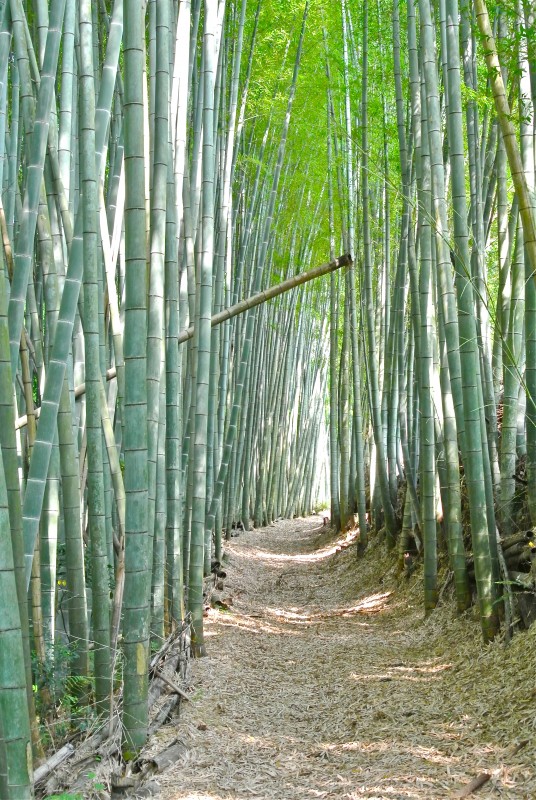
The bamboo surrounds were superb
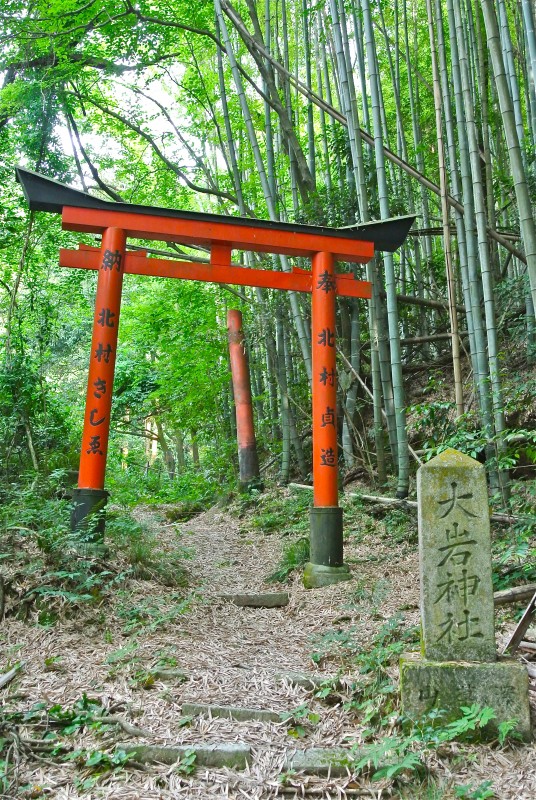
But soon suggestions of neglect began to appear…
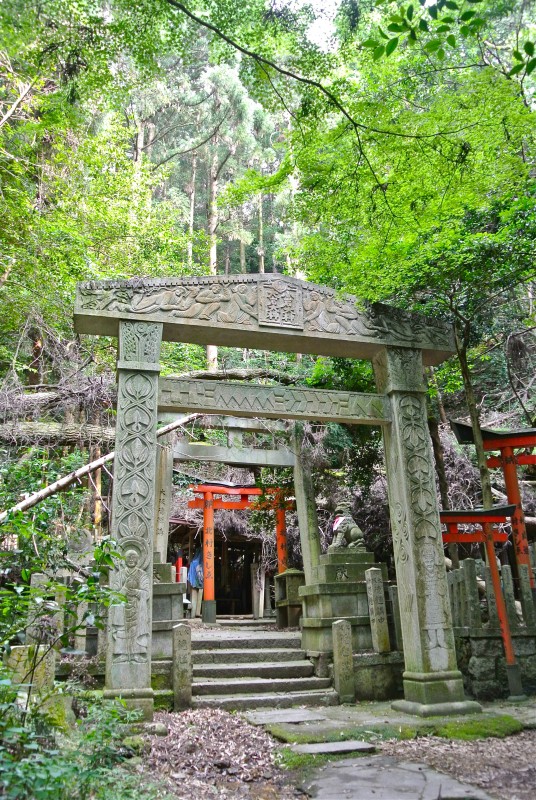
…. then a most unexpected scene
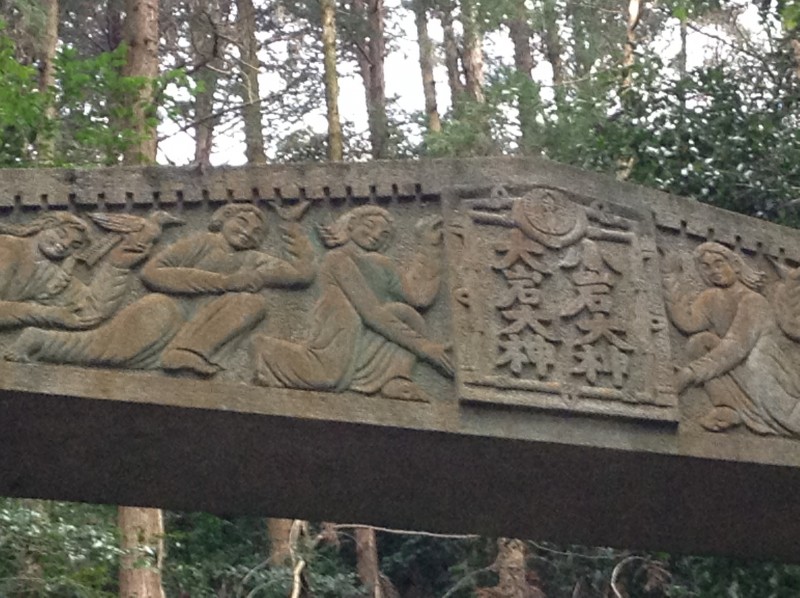
The design was puzzling, and the name too was intriguing – Big Rock (Oiwa) and Little Rock (Koiwa) Shrine. (photo Ken Rodgers)
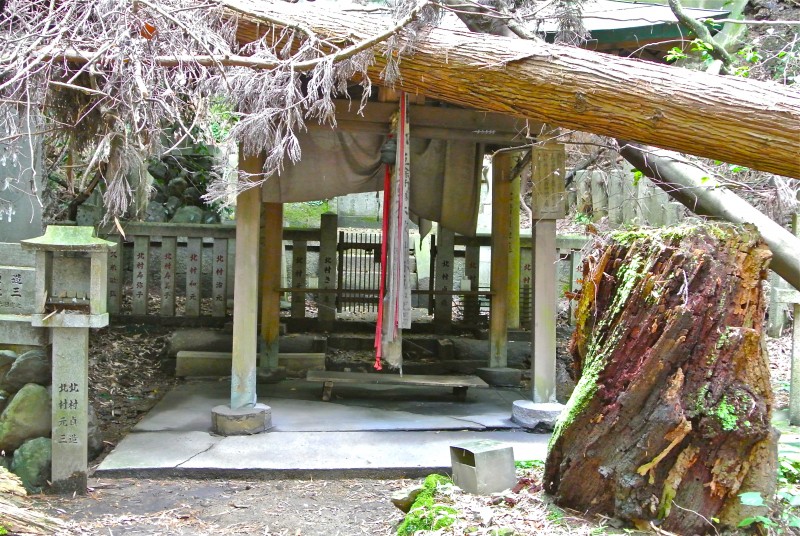
Some serious damage had been done…
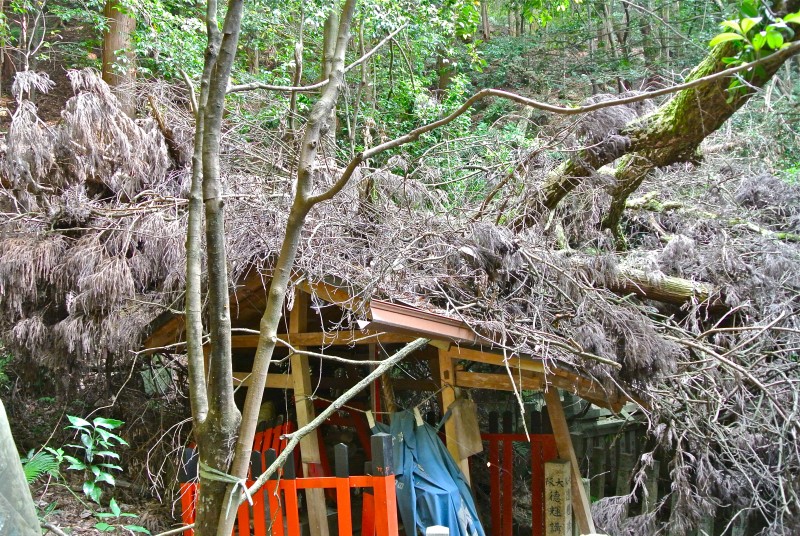
… and some of the buildings were barely visible
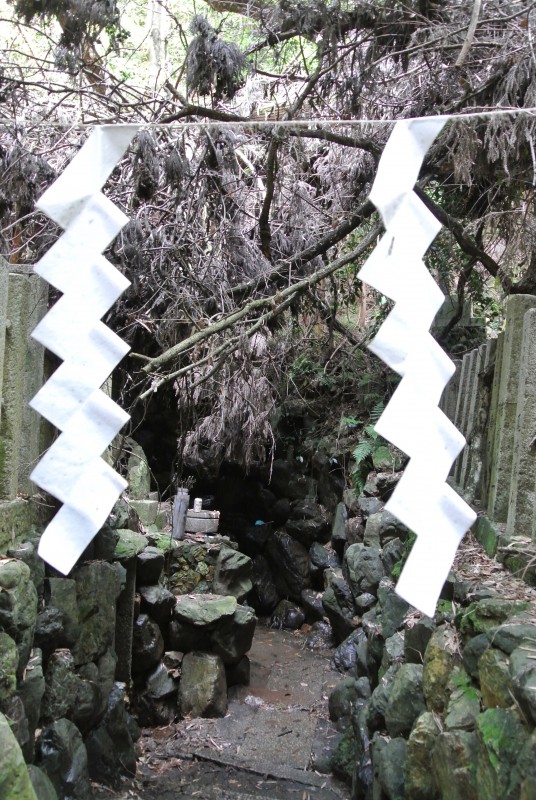
… and the entrance to the misogi waterfall was overgrown and spooky.
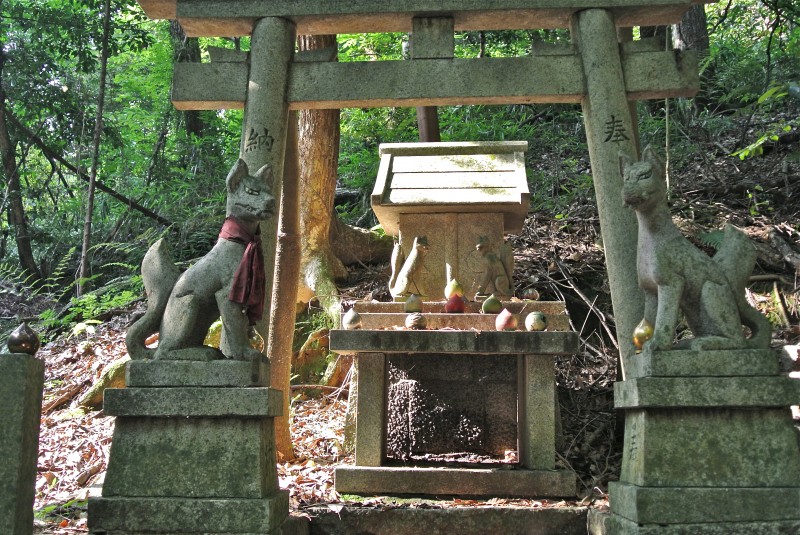
Yet all around was evidence of a once flourishing Inari faith.

Nice story sounds intriguing
Yes, and your camera would do full justice to its photogenic nature…
Goosebumps! Did you solve the mystery? ?
As of Monday June 22nd, not yet! I’m still planning to get in touch with the Domoto Insho museum to learn more about the donated torii and I also have the address of the owner of the shrine, but have not yet established contact.
Fascinating John. I look forward to Part 2.
Hi,
I really enjoyed this piece. I’ve never had an opportunity to visit the shrine, but I have read about it a few times.
From what little I can gather Insho donated the torii in 1958 (there are 2?) in memory of his mother, though I don’t know what connection she or her family might have had to the shrine.
It seems at one time the shrine god was thought to protect against/cure tuberculosis, which might explain why, with modern medicine, it has fallen out of favour.
The mountain suffered terribly from industrial waste dumping in the 1970s, a problem not entirely stamped out until fairly recently.
Also, it should be noted the shrine’s historical documents were lost during a terrible wildfire in the Edo period (I’m not sure when), which doesn’t help uncovering the origins of Oiwa.
Very much looking forward to reading what else you uncover.
Thank you for that… I hadn’t heard about the industrial waste problem in the 1970s, though it doesn’t seem to have been a factor in the shrine’s demise. Nor did I see any sign of it on my walk, so presumably it was on another part of the mountain. You’re right to say there are two Domoto torii, one donated while his mother was alive and the other after she had died. I’ll be checking for more information on that with the Domoto museum. Meanwhile, please see Part Two which is going up today…
I’m hooked. After having viewed your images, and read your posts, on Oiwa-jinja, I am keen to check-out the area for myself. I love this type of site – isolated, overgrown, full of religious icons. If anyone else is keen to visit here, let me know. maybe we can arrange it as a day out.
Please do check it out, and perhaps you can report back here on your feelings about the place. I don’t think you’ll be disappointed, though you may be surprised..